Photo Essay: Studying Fracking’s Effects, Up Close and Personal
Ten years ago, hydraulic fracturing barely existed. Today 45,000 fracked wells produce natural gas, providing energy for millions of homes and businesses, and nearly a quarter of the nation’s electricity. But scientists are far behind in understanding how this boom affects people near wells. Geochemists Beizhan Yan and James Ross of Columbia University’s Lamont-Doherty Earth Observatory are trying to fill in this gap.
Ten years ago, extraction of natural gas from shale by hydraulic fracturing barely existed. Since 2007, U.S. shale-gas production has increased 700 percent. Some 45,000 fracked wells now produce 40 percent of U.S. natural gas. But scientists are far behind in understanding how this boom affects people near wells. Geochemists Beizhan Yan and James Ross of Columbia University’s Lamont-Doherty Earth Observatory are trying to fill in this gap in rural northeastern Pennsylvania, where thousands of fracking operations have taken over formerly quiet hilltops, farms and back roads. With new wells being drilled all the time, Yan and Ross are recruiting nearby homeowners to help them test groundwater and air for potential toxins before, during and after fracking. University of Pennsylvania medical researchers studying the region have already shown that people living in heavily fracked areas have been visiting hospitals increasingly for skin, respiratory and cardiovascular ailments since the boom began in 2007. And, files just released by the Pennsylvania Department of Environmental Protection record 243 cases in which drilling has contaminated drinking-water wells. But no one can say whether specific health effects are linked to fracking, and if so, to which of the many substances it might introduce into the environment. Yan and Ross hope to help provide that information. The photo essay below shows their work over one day this summer.
Image Carousel with 16 slides
A carousel is a rotating set of images. Use the previous and next buttons to change the displayed slide
-
Slide 1: In the verdant hill country of northeast Pennsylvania, thousands of acres of onetime farmland are being leveled to host large-scale hydrofracking operations.
-
Slide 2: Geochemist Beizhan Yan of Columbia Universityâs Lamont-Doherty Earth Observatory is studying the environmental effects. His vest carries sensors to record air quality and noise levels as he walks.
-
Slide 3: Volatile chemicals and gas, as well as hazardous natural substances from deep underground can reach air or water if a well is not working properly. Here, tanks at a newly drilled site await use.
-
Slide 4: Setting up each well requires thousands of truckloads of material and machinery. Here, workers assemble pipe at a new well.
-
Slide 5: Energy companies strictly control access to wells; the Columbia study focuses on nearby homes.
-
Slide 6: 79-year-old Mary Alice Heaney retired years ago from the Bronx to a remote dirt road in Pennsylvaniaâs Lycoming County. Now, just a few feet over her fence line, an energy company plans to drill. âWho would have thought anything would ever
-
Slide 7: The well supplying Heaneyâs water is just downhill of her house; Yan will test it before any drilling starts, then during and after. Tests will cover dozens of substances including methane, various metals and radioactive radium.
-
Slide 8: Yan and Ross will need data from many homes to do a credible study. Heaney advises on other neighbors who might cooperate.
-
Slide 9: Next stop: the home of John Michael Beck, a now retired vocational counselor who built his place on four remote acres in 1985. In his spare time, he raised beef cattle, using hay from the next-door neighborâs field.
-
Slide 10: Four years ago, an energy company obliterated the hayfield with a well pad. Production hasnât started, but they plan to drill seven wells here.
-
Slide 11: The pad extends to within 12 feet of Beckâs yard; when it was being built, he smelled diesel fumes inside his house, and rain runoff has flooded his property. âYou have aesthetics, you have privacy issues, you have air problems,â he sa
-
Slide 12: Lamont geochemist James Ross assembles an air sampler in an upstairs window of Beckâs house. It will take background readings for a couple of weeks, before drilling starts.
-
Slide 13: The sampler is designed to detect fine dust, and black carbon, a good tracer of diesel fumes.
-
Slide 14: The equipment will take a reading every five minutes for two weeks. Ross makes some final settings.
-
Slide 15: A lot of people around here donât want to talk to researchers. But this motorist, who stopped to chat with the scientists when she saw them halted by the roadside, ended up offering to help find study participants.
-
Slide 16: A tank built to hold water for fracking testifies to the massive nature of the development coming to dominate much of the countryside in this area.

In the verdant hill country of northeast Pennsylvania, thousands of acres of onetime farmland are being leveled to host large-scale hydrofracking operations.
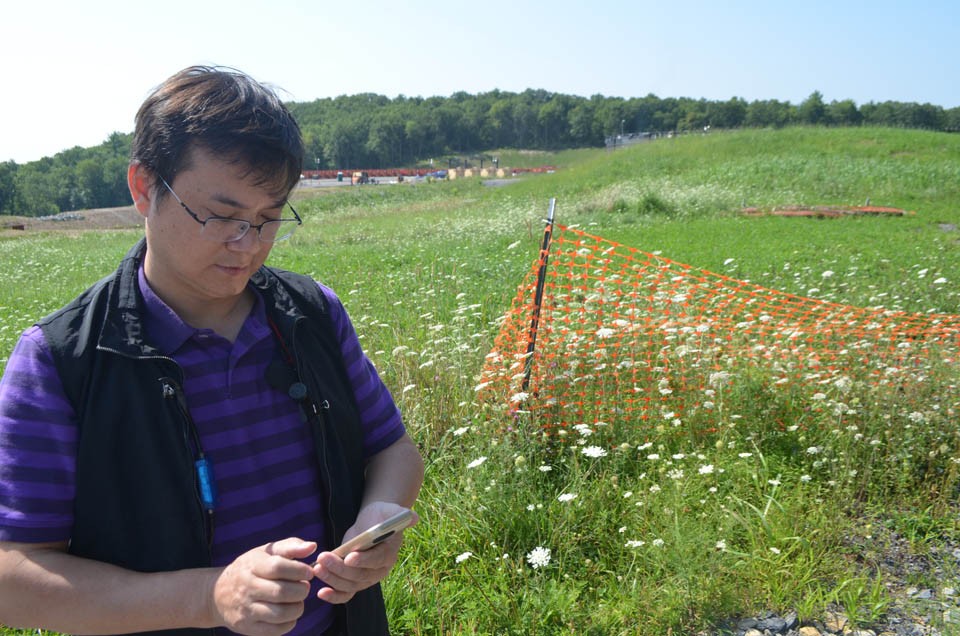
Geochemist Beizhan Yan of Columbia Universityâs Lamont-Doherty Earth Observatory is studying the environmental effects. His vest carries sensors to record air quality and noise levels as he walks.
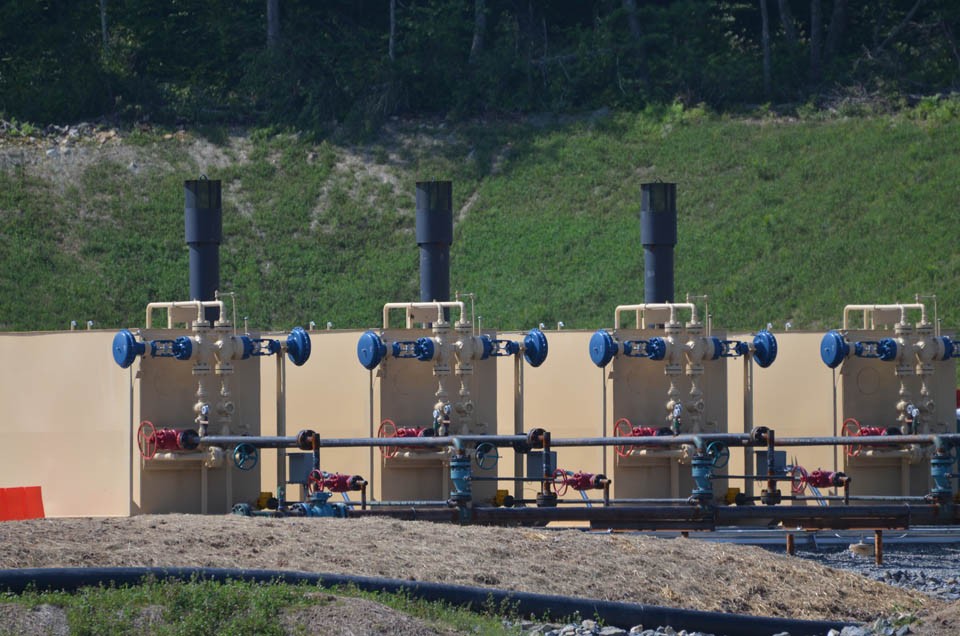
Volatile chemicals and gas, as well as hazardous natural substances from deep underground can reach air or water if a well is not working properly. Here, tanks at a newly drilled site await use.
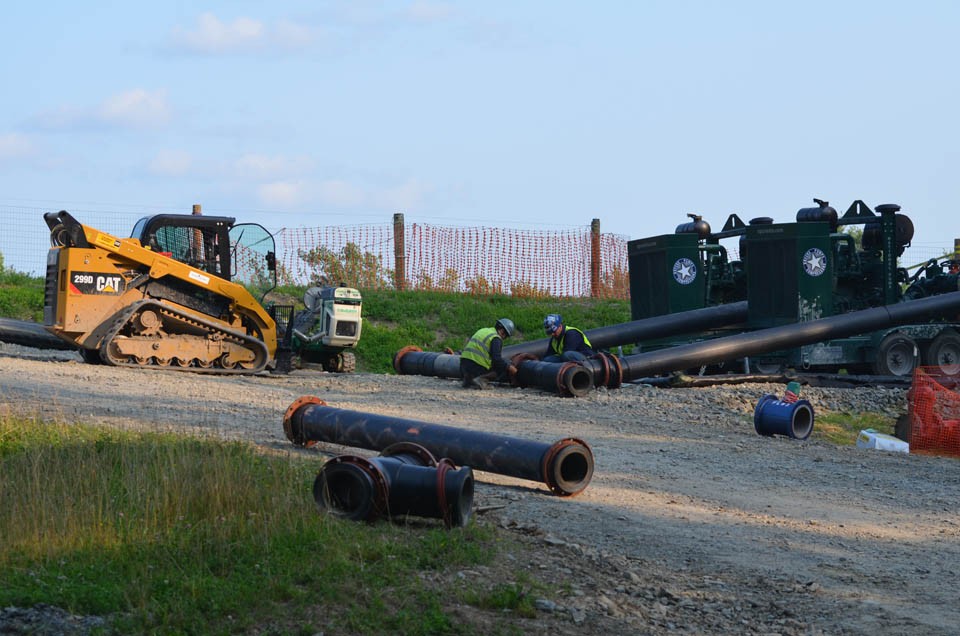
Setting up each well requires thousands of truckloads of material and machinery. Here, workers assemble pipe at a new well.
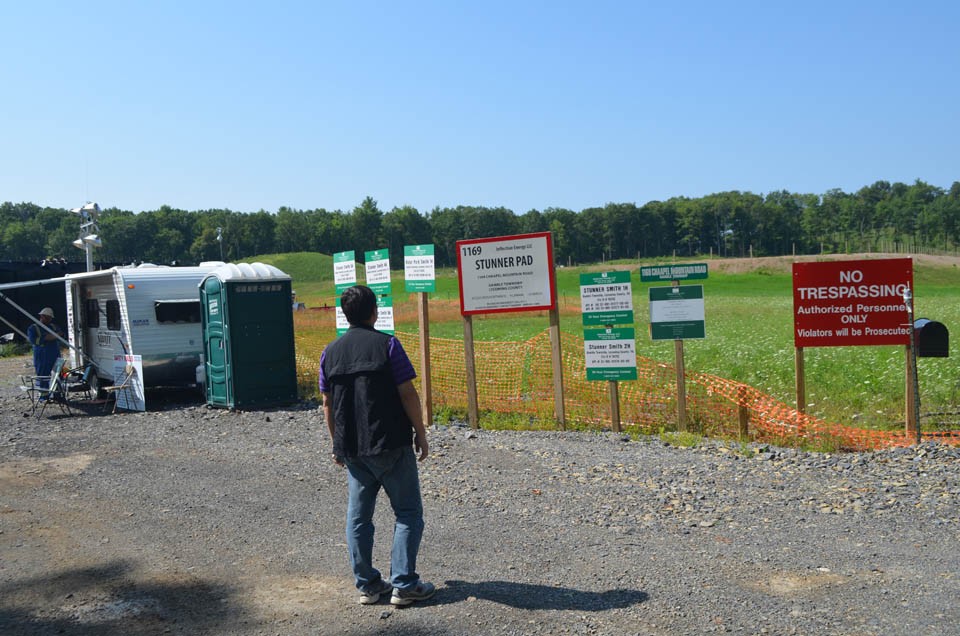
Energy companies strictly control access to wells; the Columbia study focuses on nearby homes.
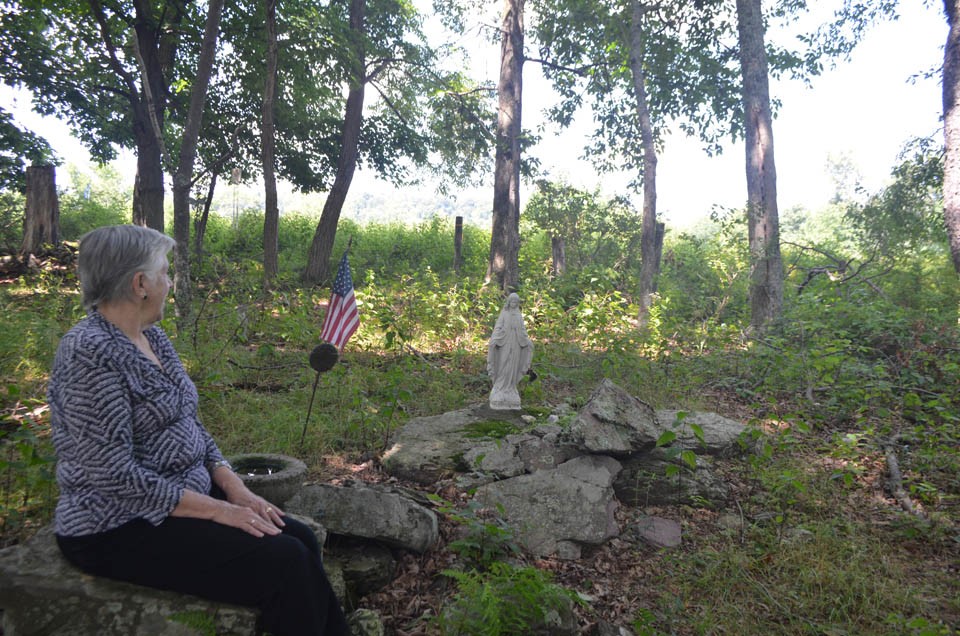
79-year-old Mary Alice Heaney retired years ago from the Bronx to a remote dirt road in Pennsylvaniaâs Lycoming County. Now, just a few feet over her fence line, an energy company plans to drill. âWho would have thought anything would ever
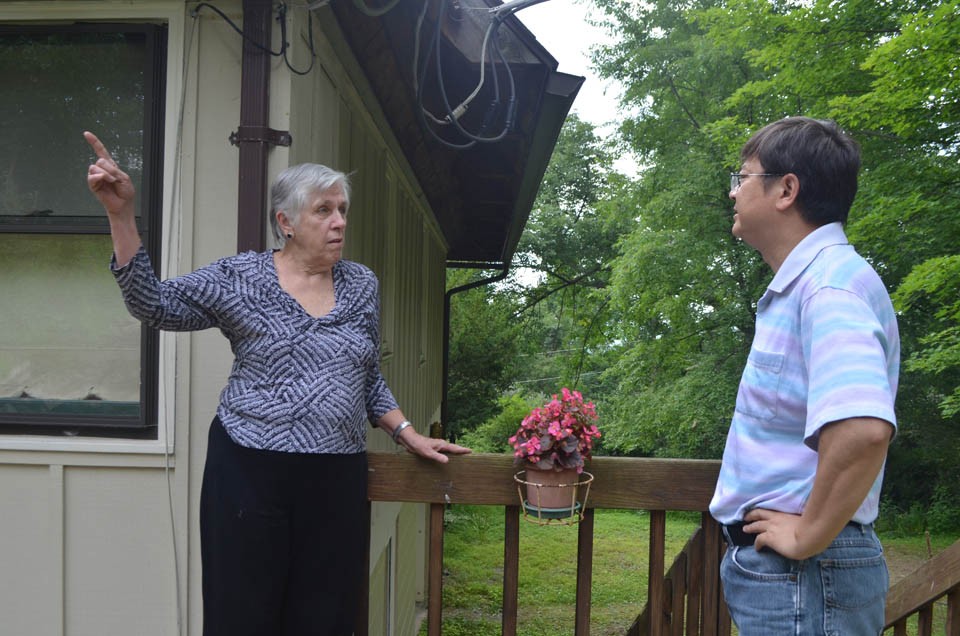
The well supplying Heaneyâs water is just downhill of her house; Yan will test it before any drilling starts, then during and after. Tests will cover dozens of substances including methane, various metals and radioactive radium.
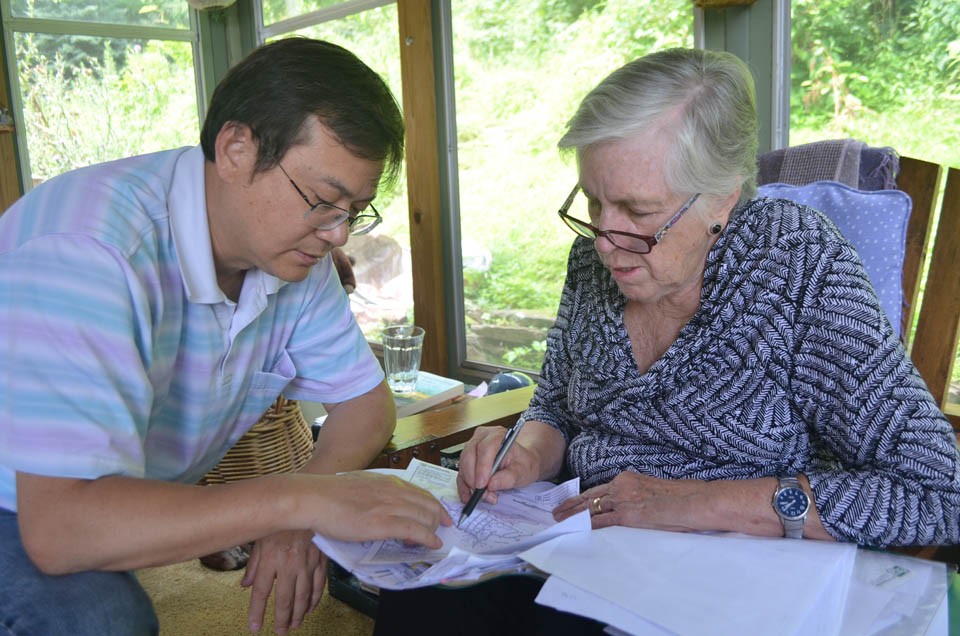
Yan and Ross will need data from many homes to do a credible study. Heaney advises on other neighbors who might cooperate.

Next stop: the home of John Michael Beck, a now retired vocational counselor who built his place on four remote acres in 1985. In his spare time, he raised beef cattle, using hay from the next-door neighborâs field.
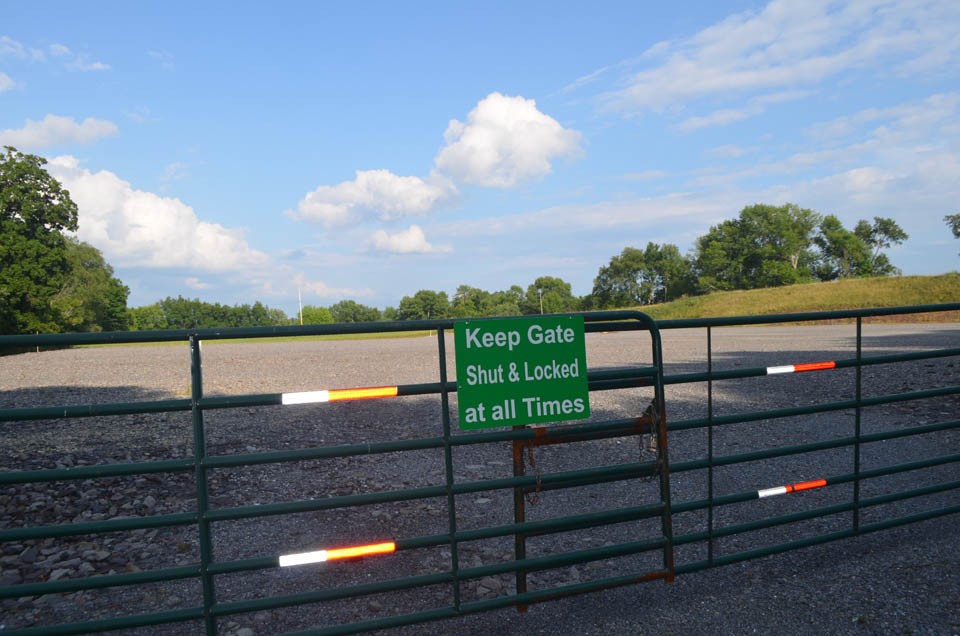
Four years ago, an energy company obliterated the hayfield with a well pad. Production hasnât started, but they plan to drill seven wells here.
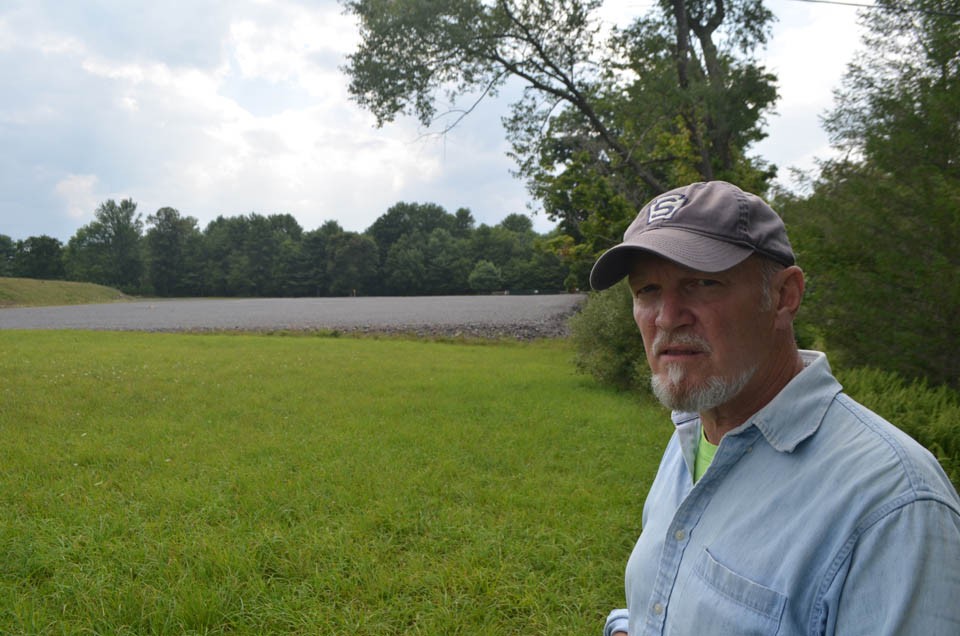
The pad extends to within 12 feet of Beckâs yard; when it was being built, he smelled diesel fumes inside his house, and rain runoff has flooded his property. âYou have aesthetics, you have privacy issues, you have air problems,â he sa
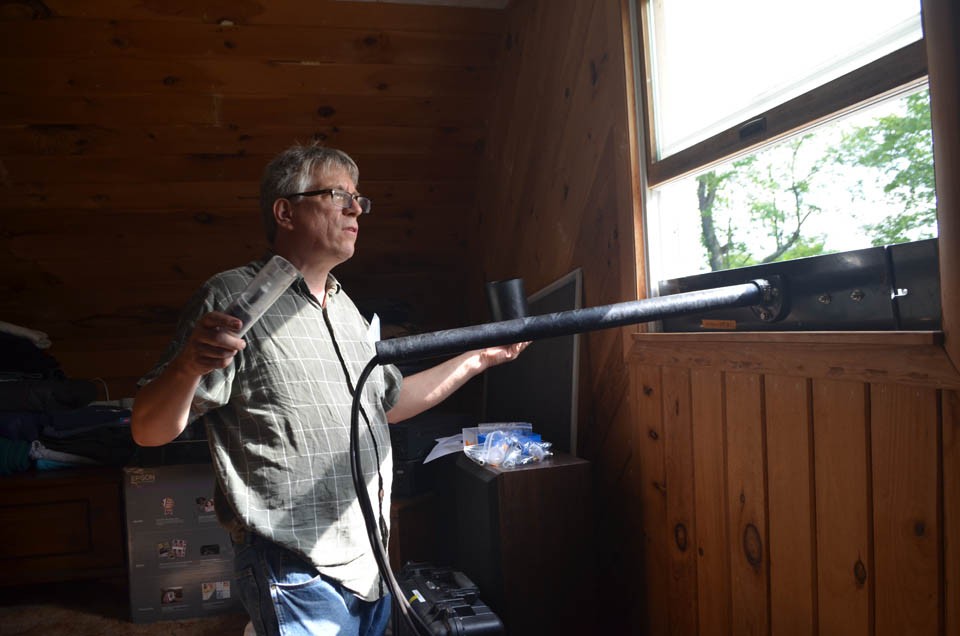
Lamont geochemist James Ross assembles an air sampler in an upstairs window of Beckâs house. It will take background readings for a couple of weeks, before drilling starts.
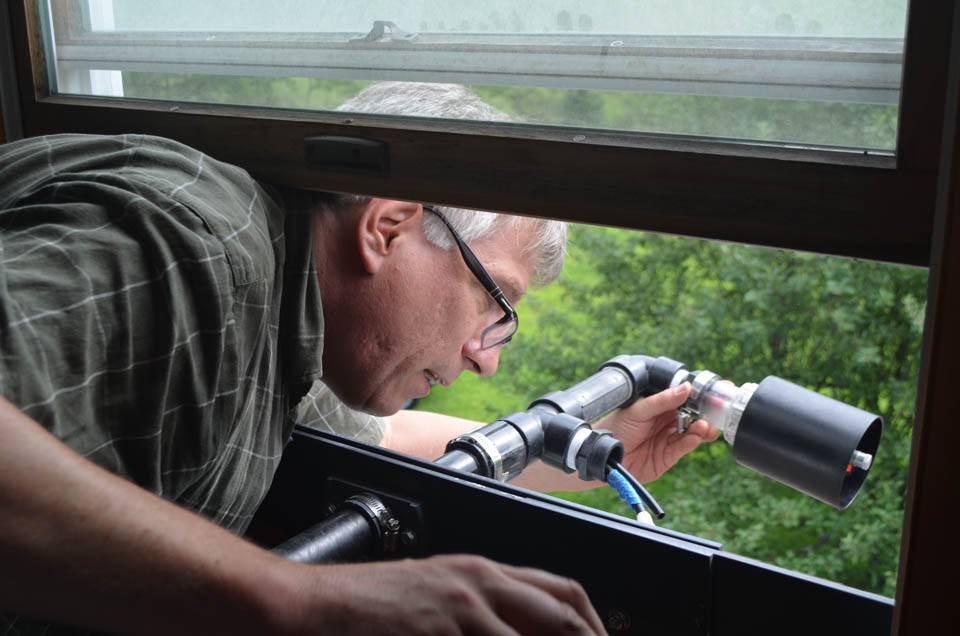
The sampler is designed to detect fine dust, and black carbon, a good tracer of diesel fumes.

The equipment will take a reading every five minutes for two weeks. Ross makes some final settings.
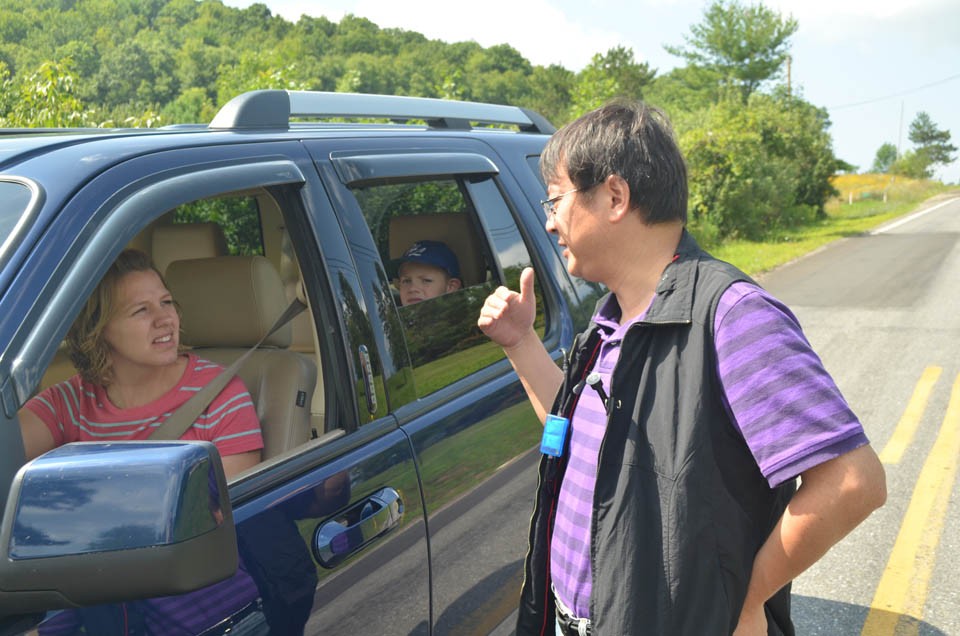
A lot of people around here donât want to talk to researchers. But this motorist, who stopped to chat with the scientists when she saw them halted by the roadside, ended up offering to help find study participants.
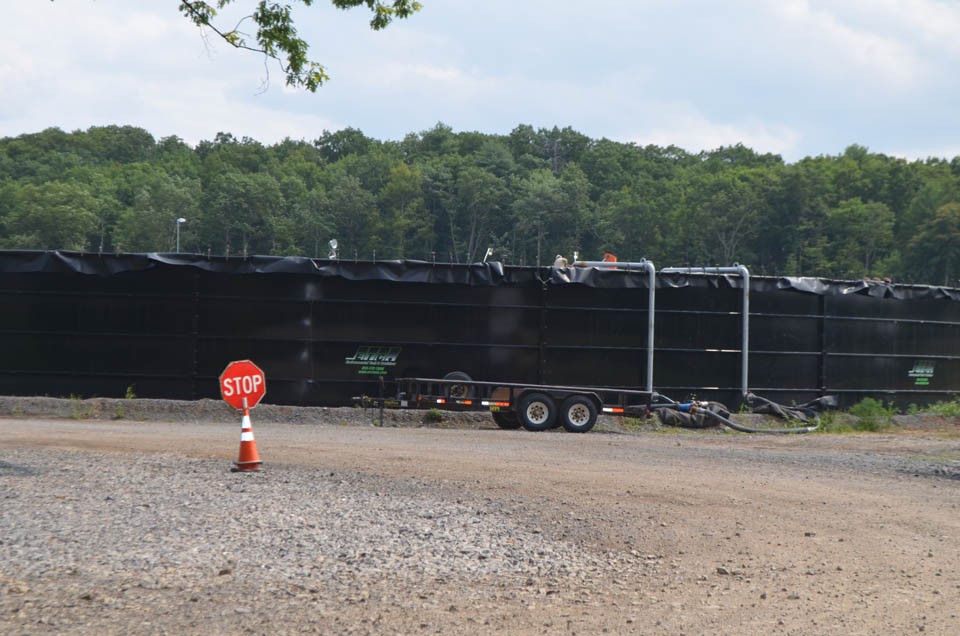
A tank built to hold water for fracking testifies to the massive nature of the development coming to dominate much of the countryside in this area.
Hydrofracking involves leveling out large areas with crushed stone, bringing in acres of infrastructure and heavy equipment, then drilling deep into shale layers below and injecting millions of gallons of chemical-laced water and sand to crack open gas reserves there. Each fracked well requires thousands of truckloads of rock, sand, water, chemicals and machinery; this brings diesel fumes, dust and noise. (A Lamont student recently counted 30 big rigs entering one site in just an hour.) Due to a legal loophole, the U.S. Environmental Protection Agency (EPA) does not regulate fracking fluids; in fact, in most places, even their compositions remain secret. But studies have show they can contain volatile formaldehyde, benzene or some 1,000 other substances, many of them known health hazards if leaked into air or water. Drilling also brings up dangerous natural products from deep gas-bearing shales, including salts, heavy metals and radioactive elements. Then there is the gas itself, mostly methane, which can leak from wellheads, pipes and valves into air or water. EPA estimates that leakage bleeds off 1 to 8 percent of production.
The effects are so far known only through a few studies, but evidence that there are effects is growing. A study just released by five universities shows that methane has been leaking from faulty well casings into groundwater in both Texas and Pennsylvania. There is a film documentary showing a flaming Colorado kitchen faucet attributed to methane leakage; a court judgment this year awarding a Texas family $2.9 million from a company said to have poisoned them with air pollution. Other homeowners have brought complaints, but settlements usually include gag orders, and in some cases, fracking companies have actively tried to silence critics by suing them. A wide-scale study seeking to understand the risks to neighbors of drilling is now underway in Colorado. The EPA itself has started a somewhat belated nationwide study of fracking’s impacts on drinking water, but a draft is not expected until late 2014. Meanwhile, last month the agency issued a report showing apparent fracking-related contamination of wells in Wyoming. In any case, overall, funds for studies have remained thin. So for now, discourse on the subject is largely a war of rhetoric between energy companies who say fracking is generally harmless, and opponents who say it’s not. People living near wells are caught in the middle, often not knowing what to think. “It’s important to get the data, so everyone can consider this objectively,” says Yan.
This research is supported by the NIEHS Center for Environmental Health at Columbia University, and the NIEHS Center of Excellence in Environmental Toxicology at the University of Pennsylvania. Summer interns have been supported by the Barnard Summer Research Institute.Â
